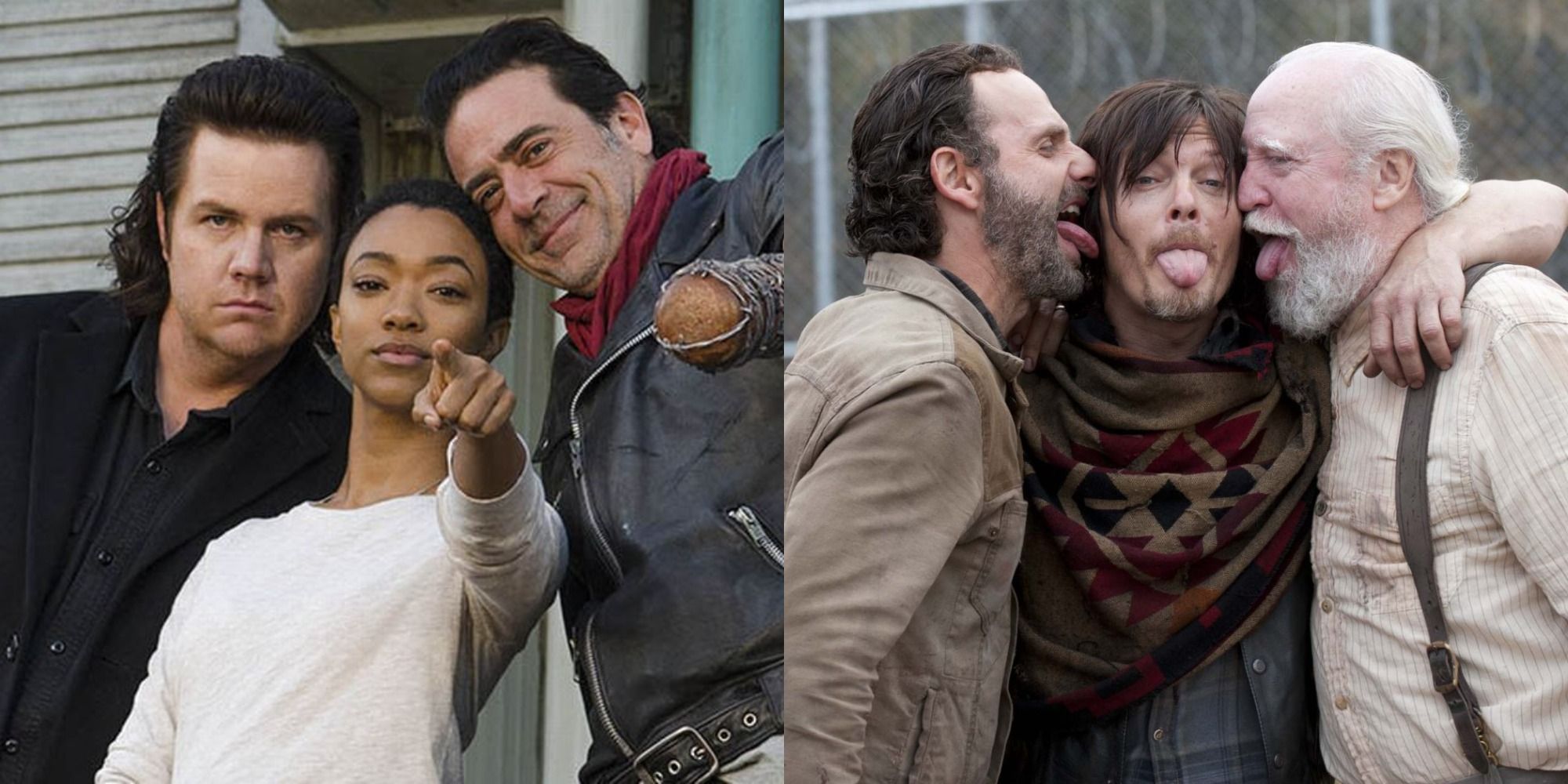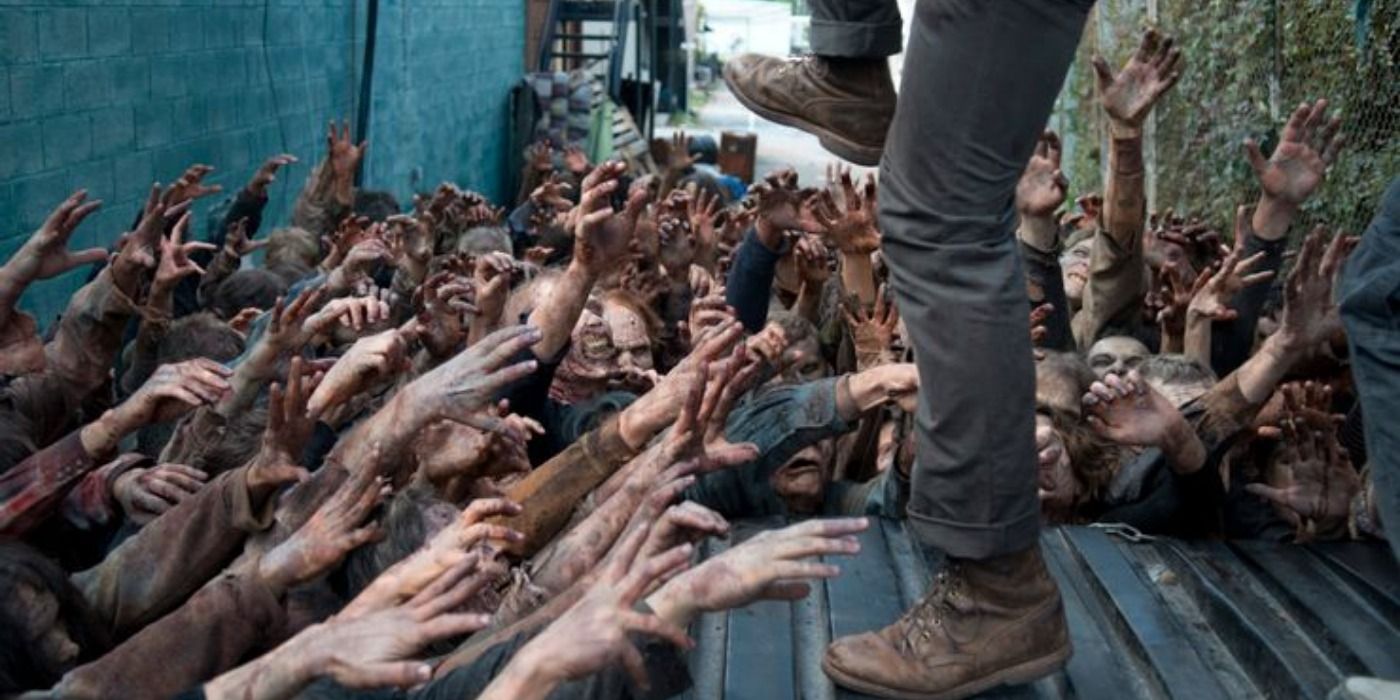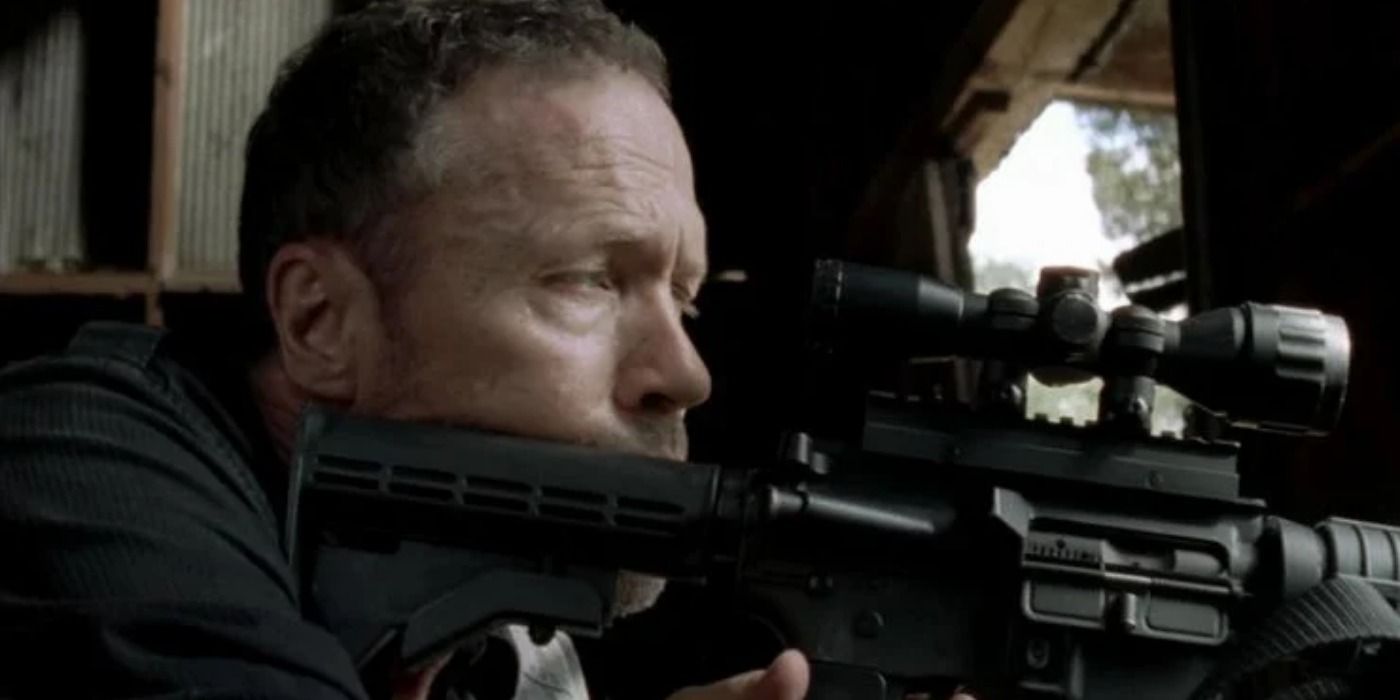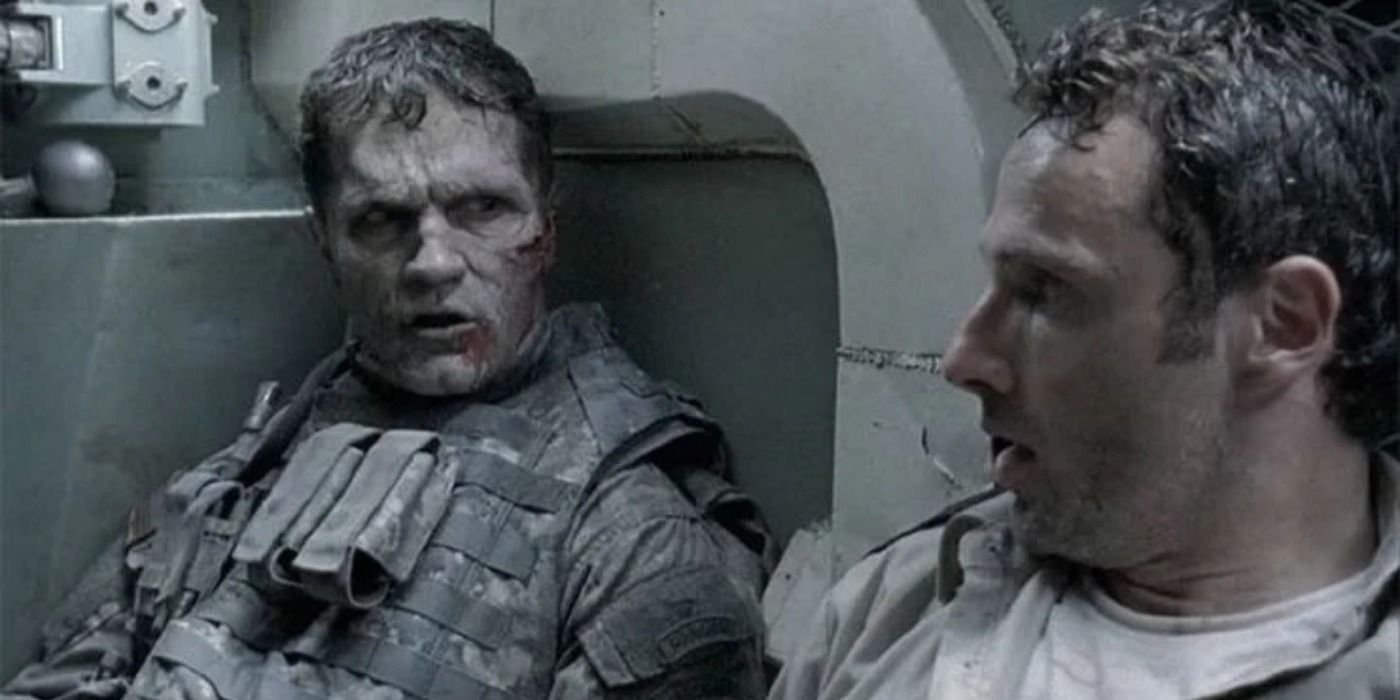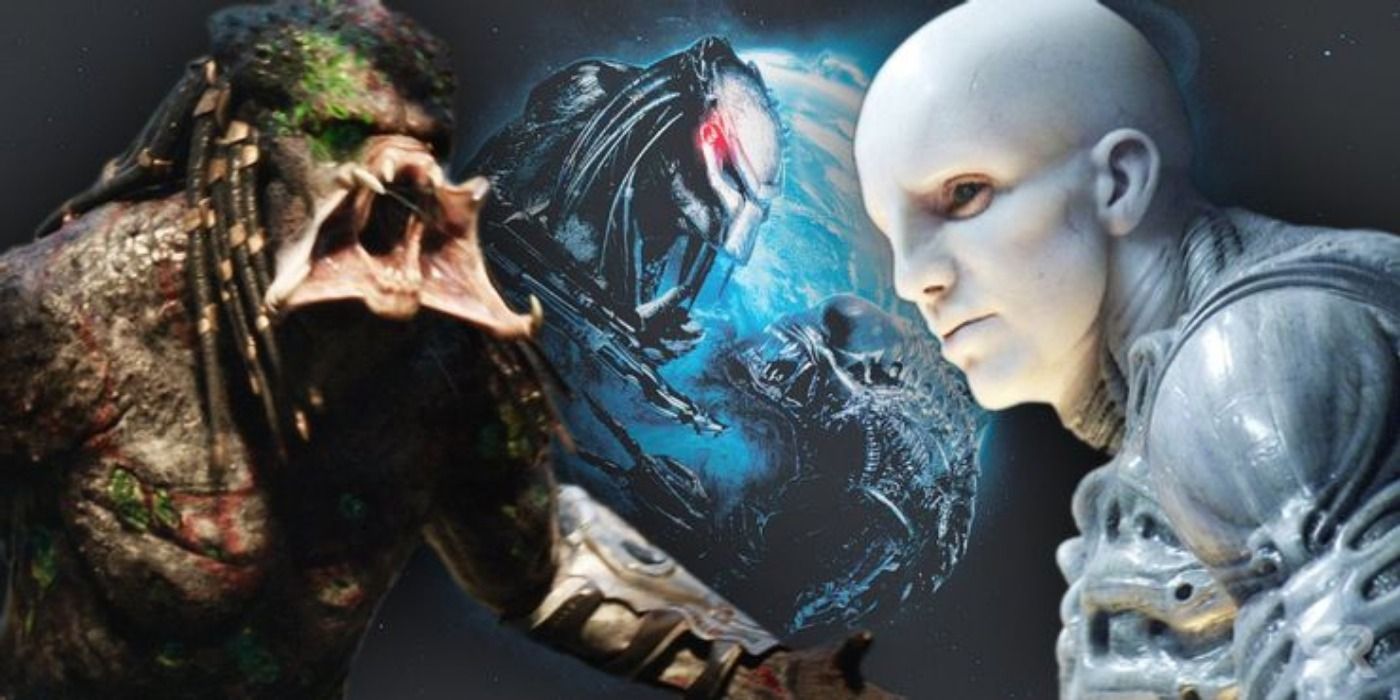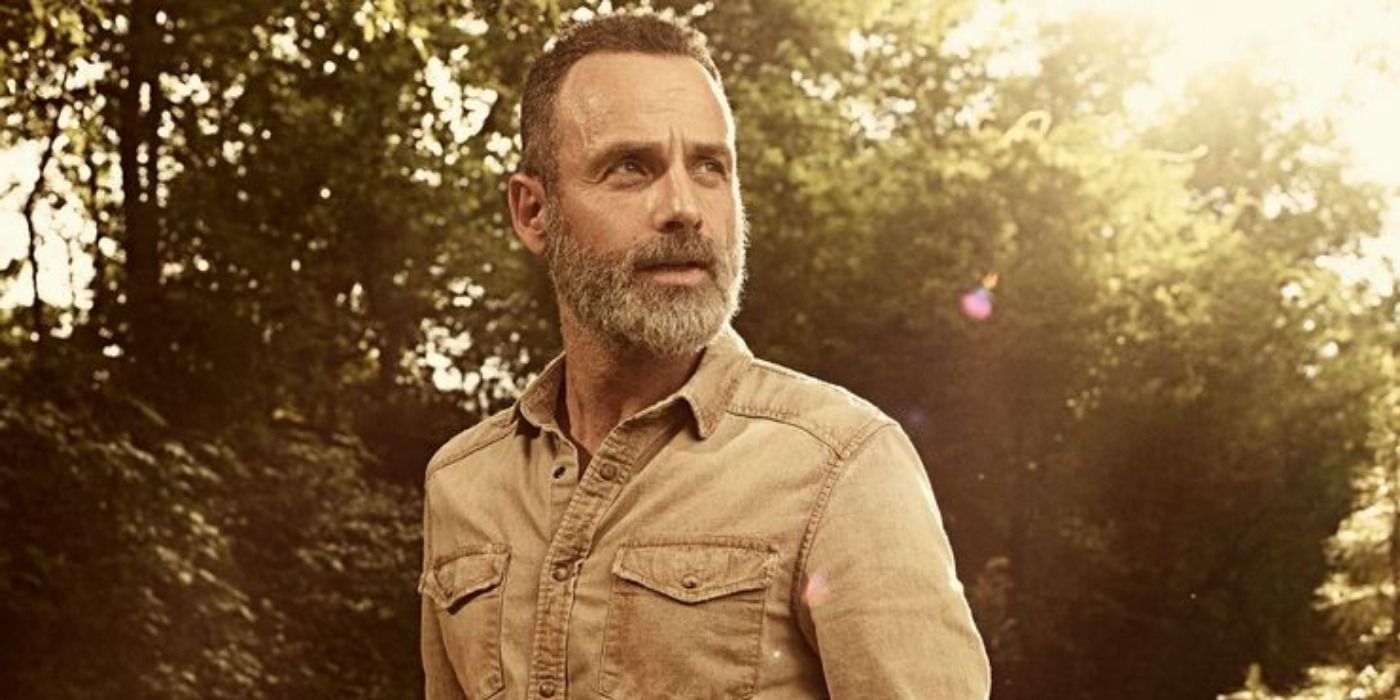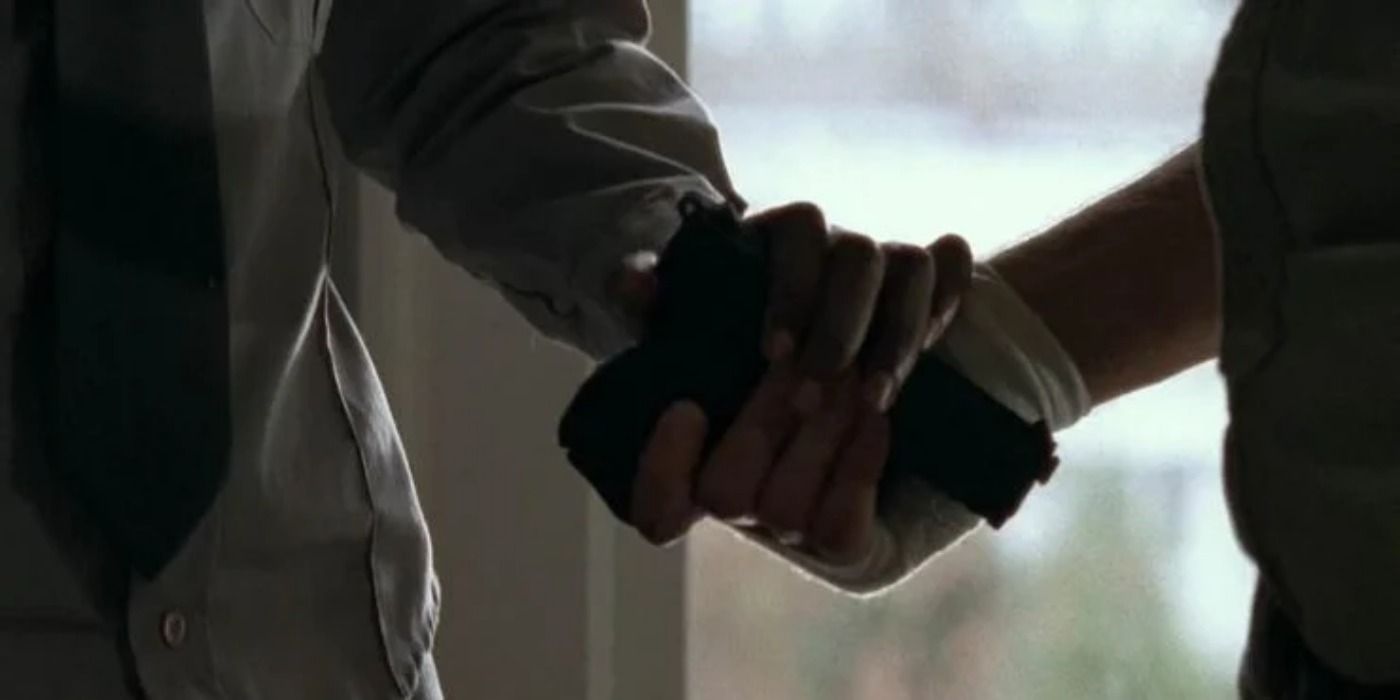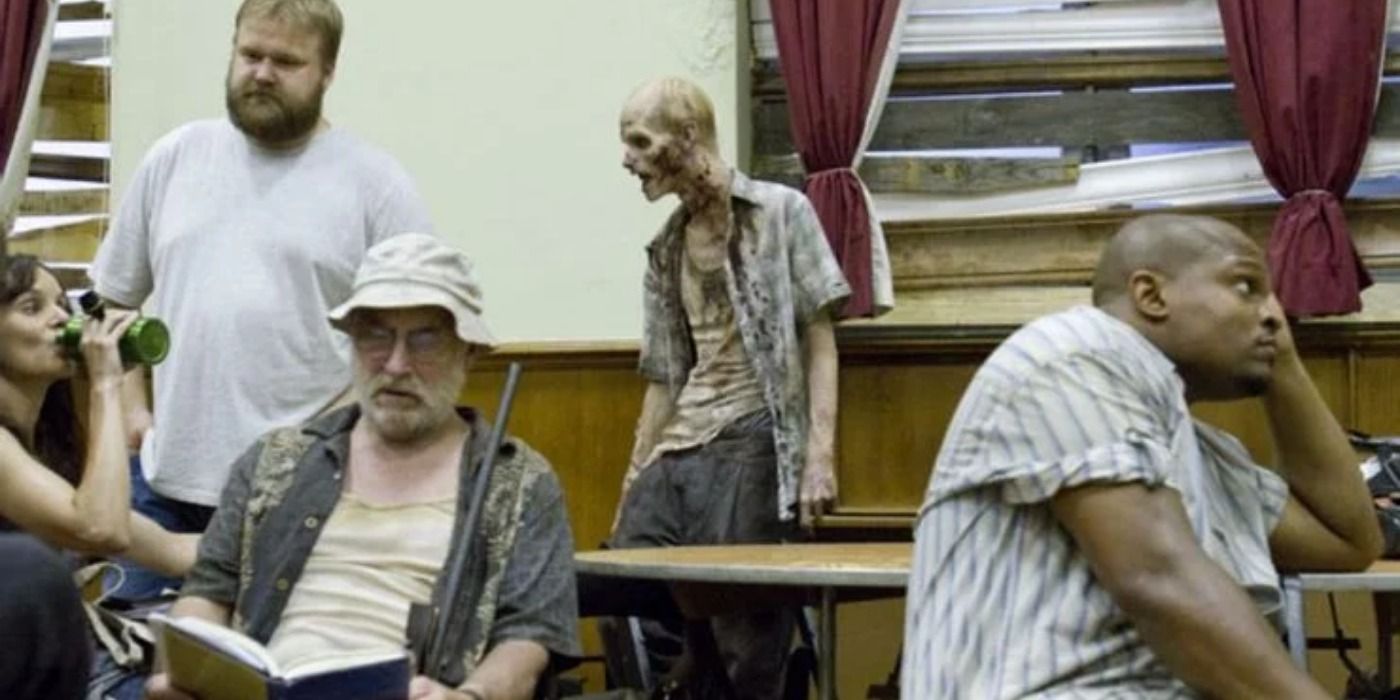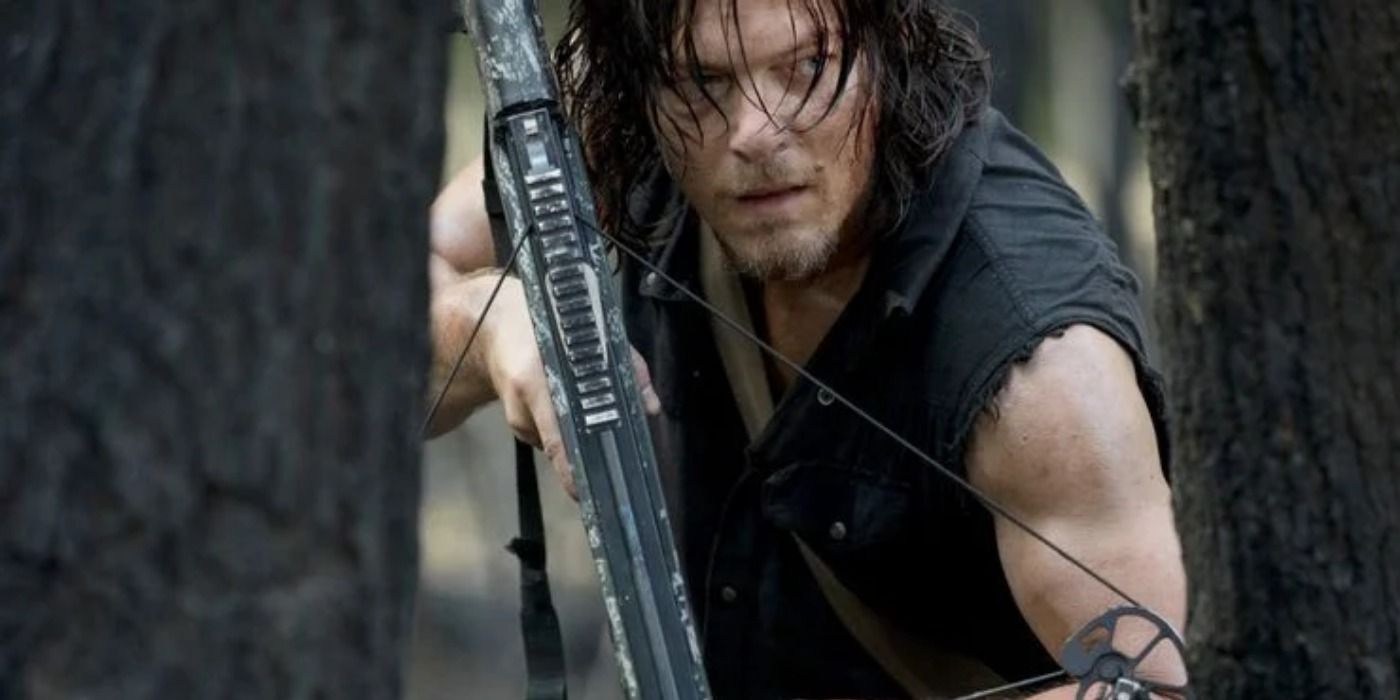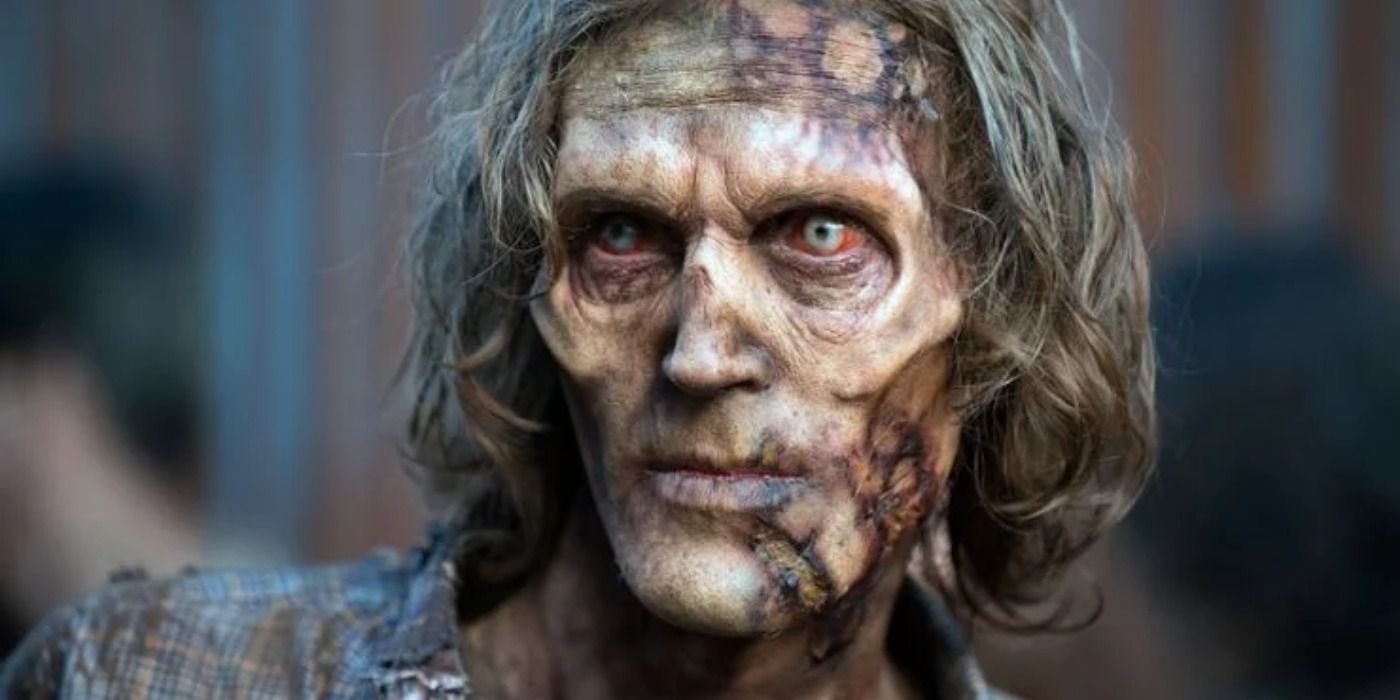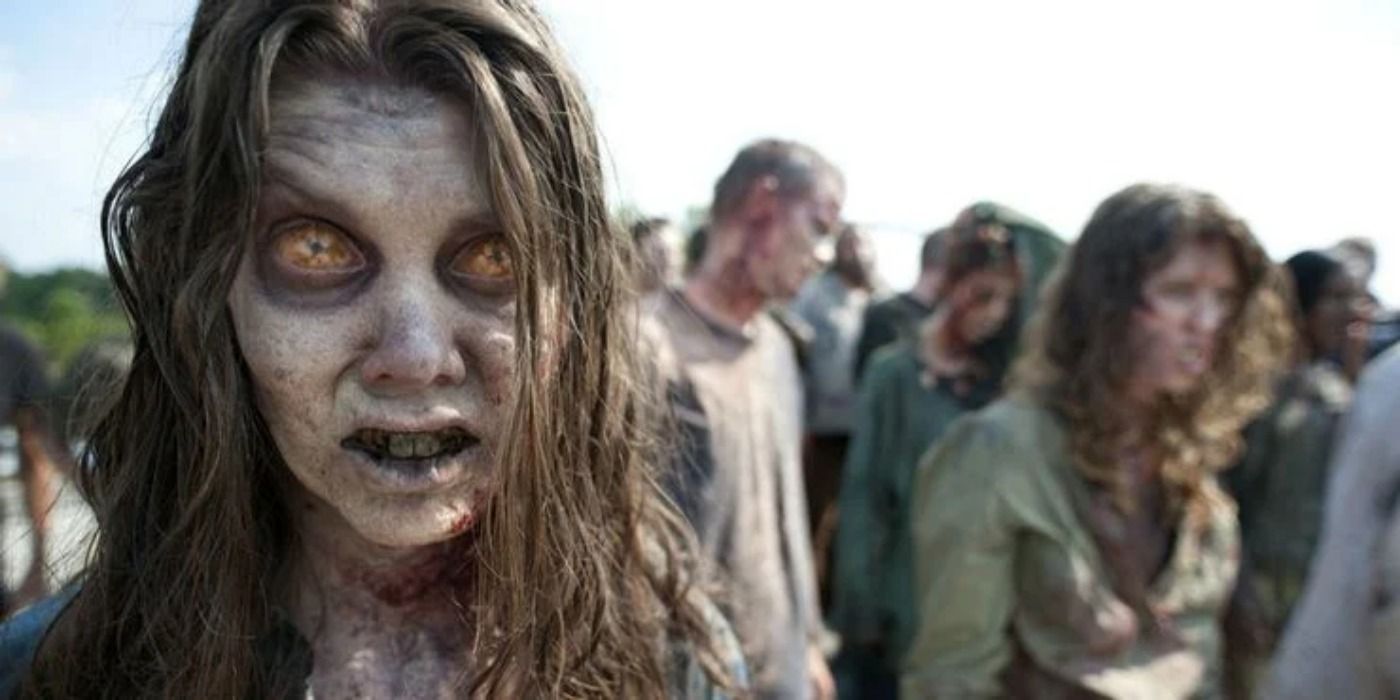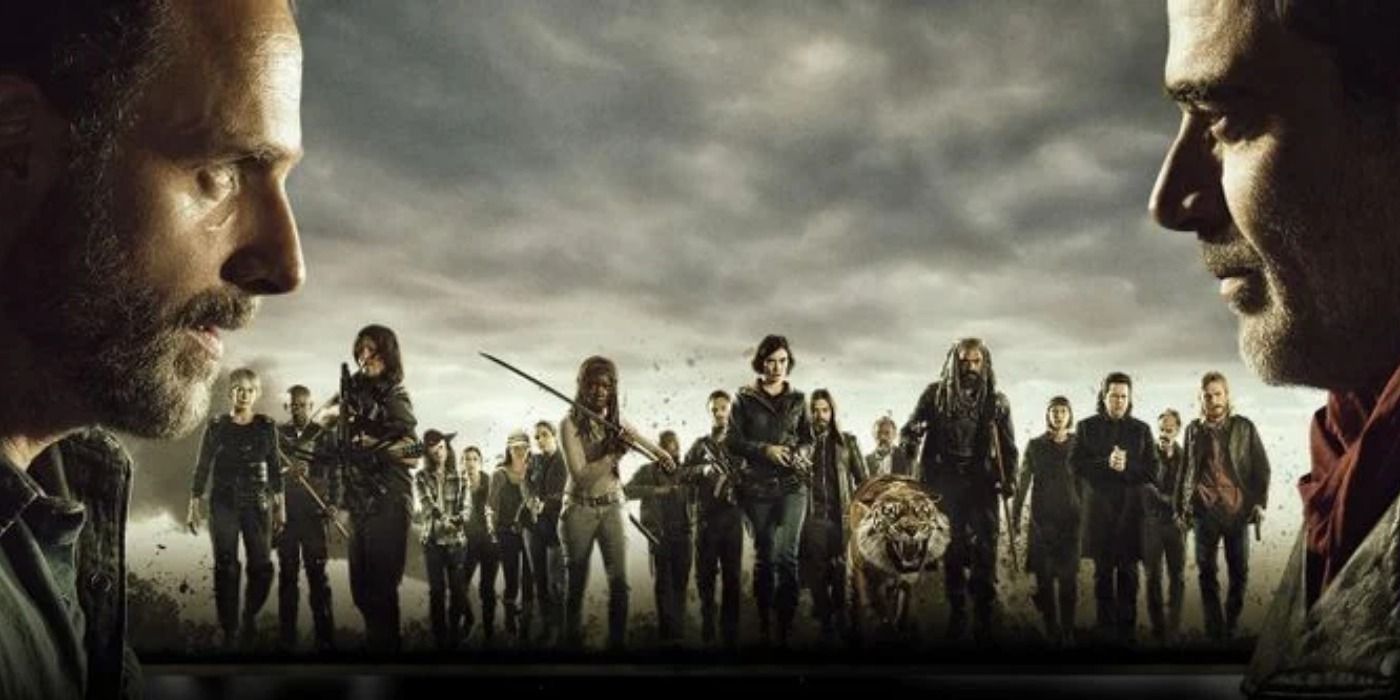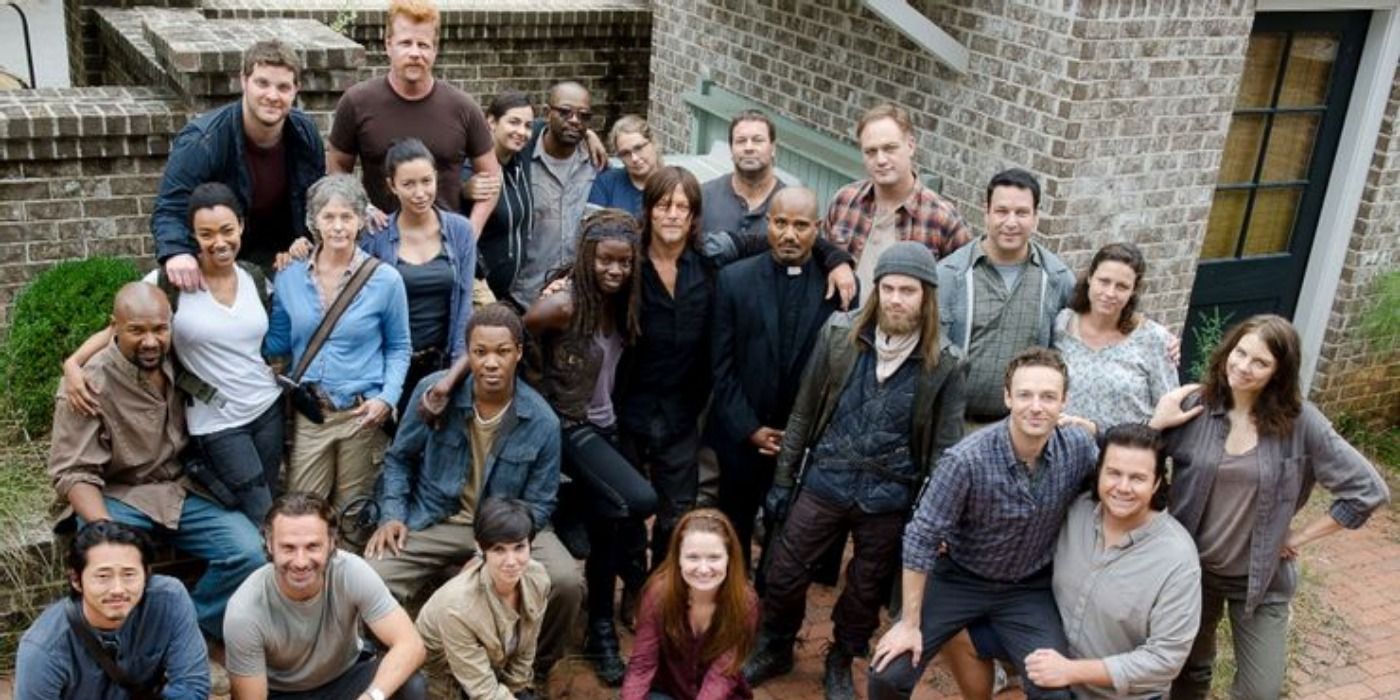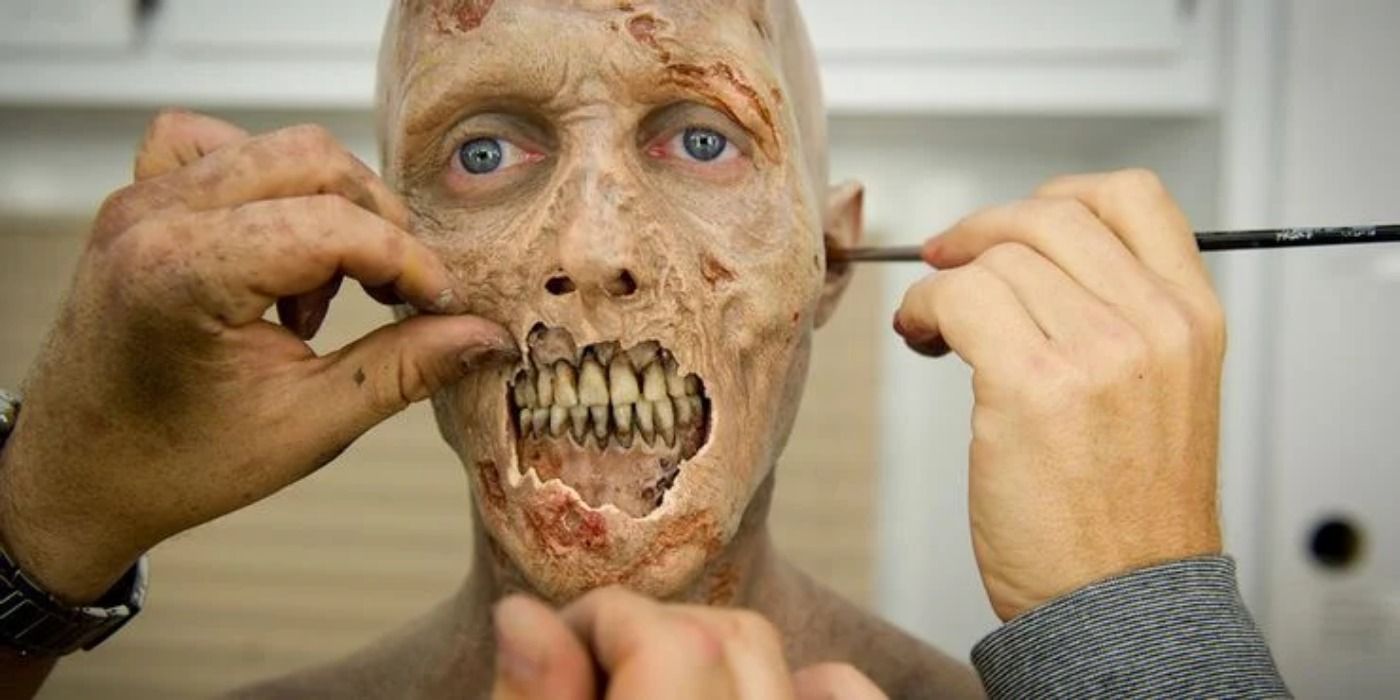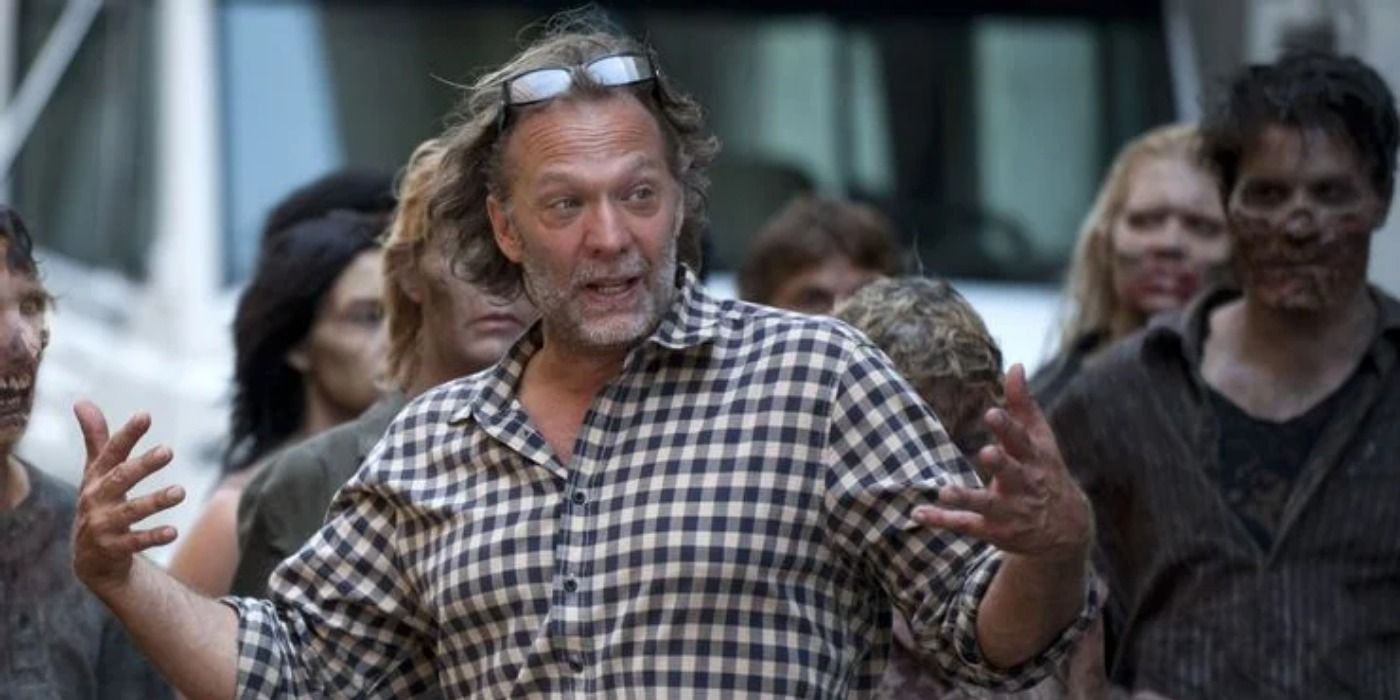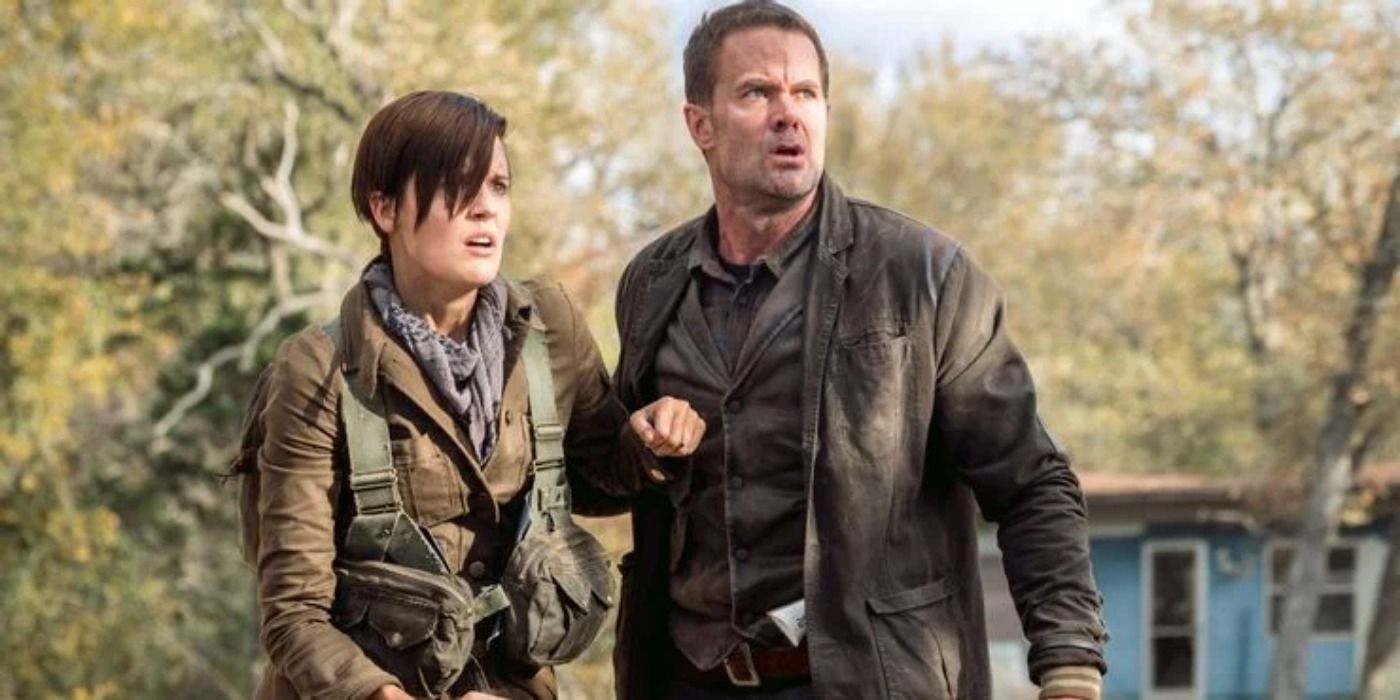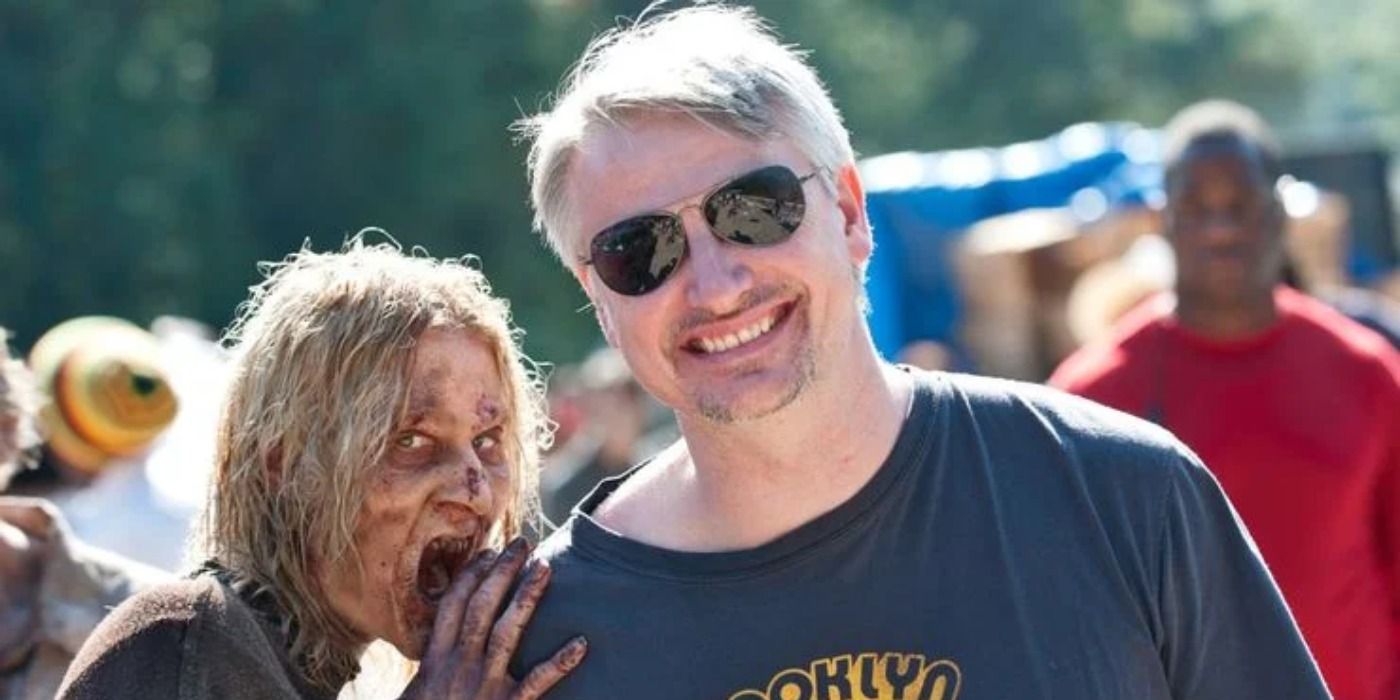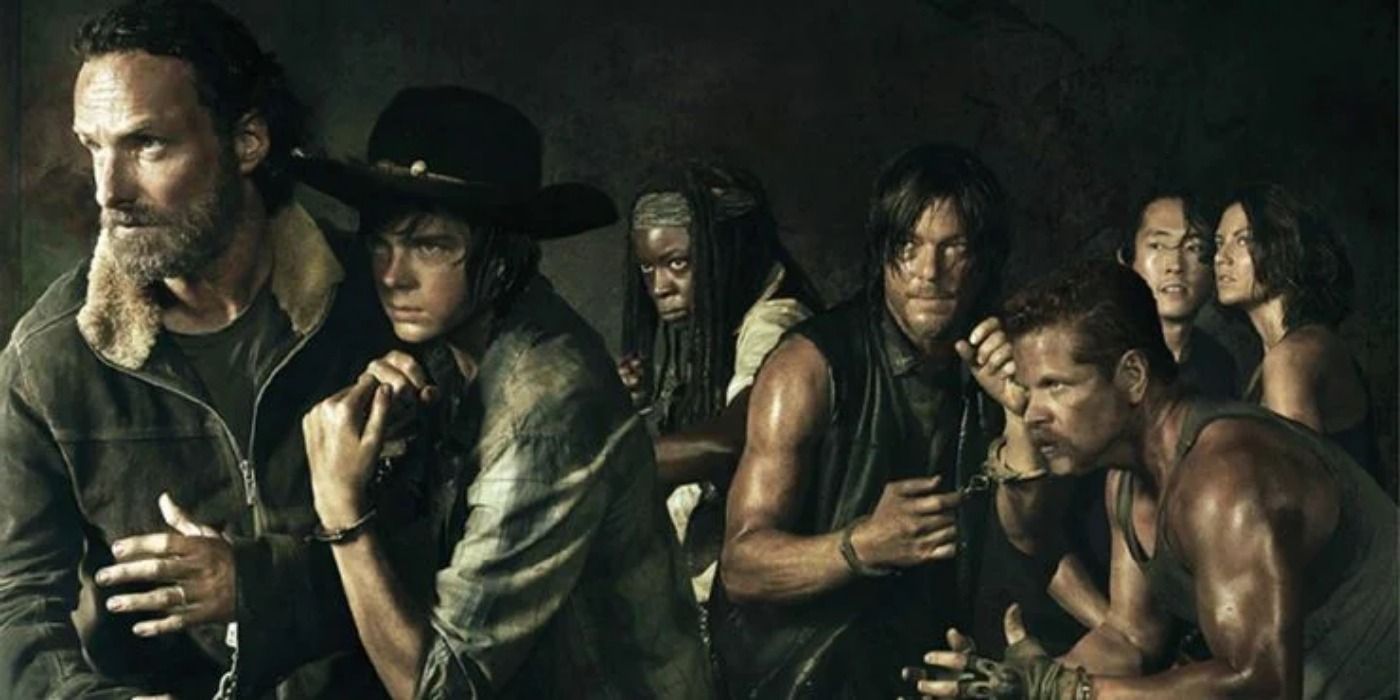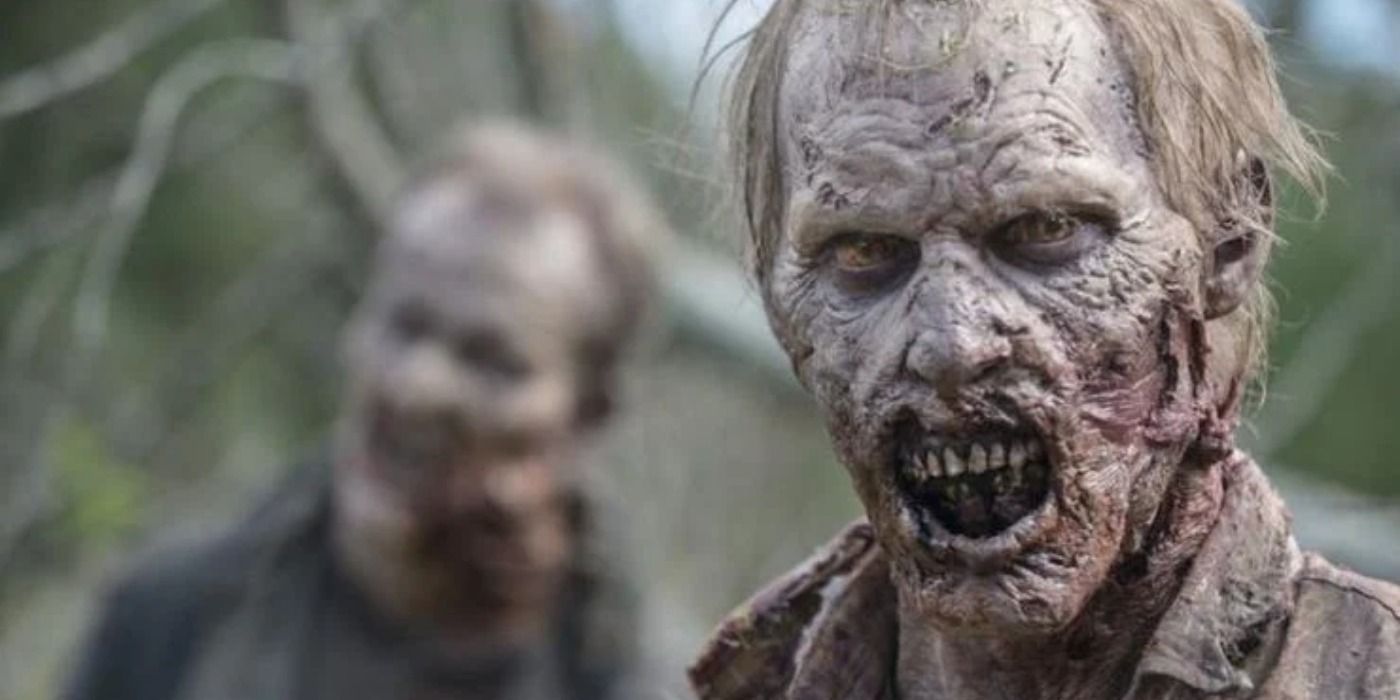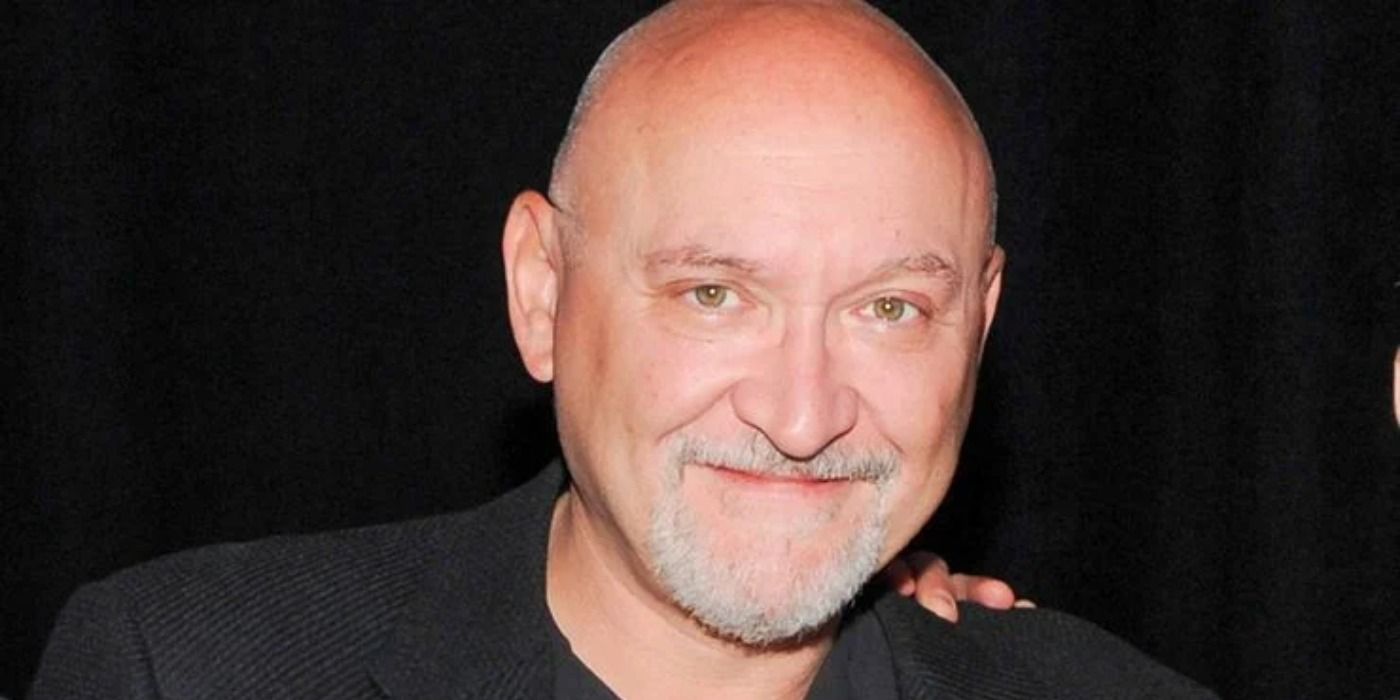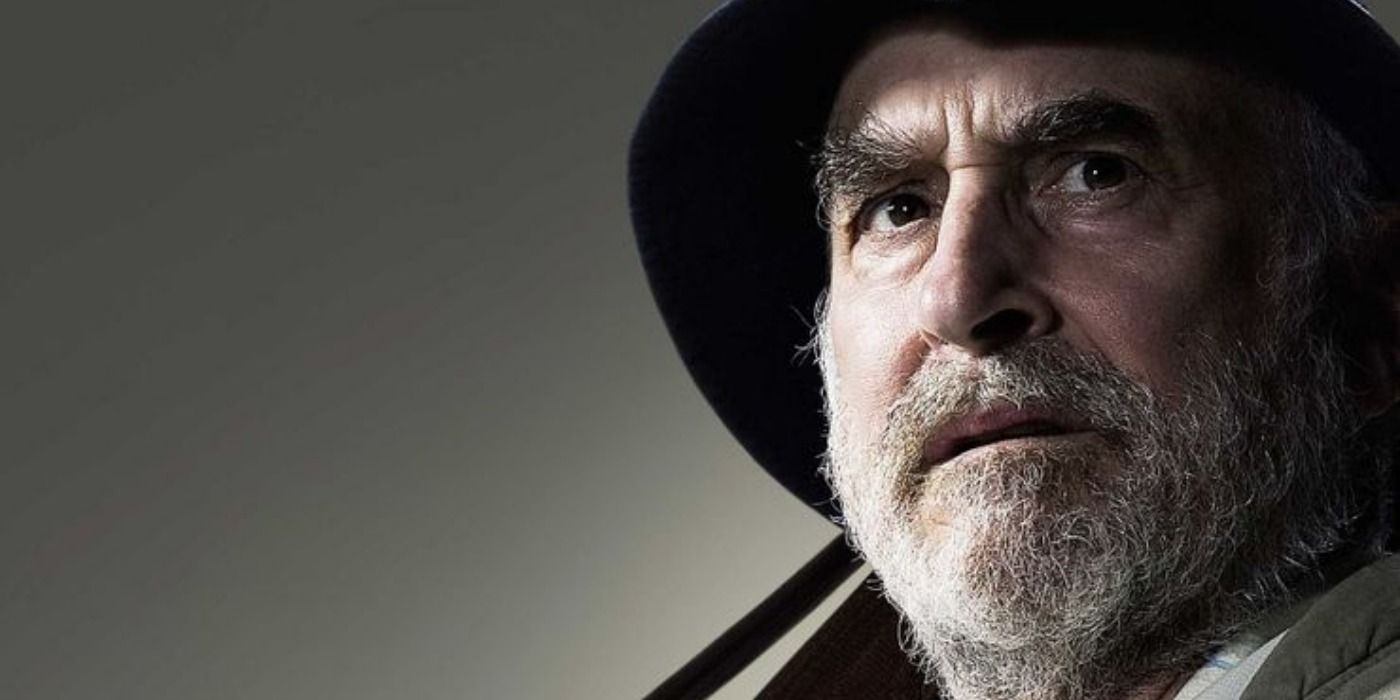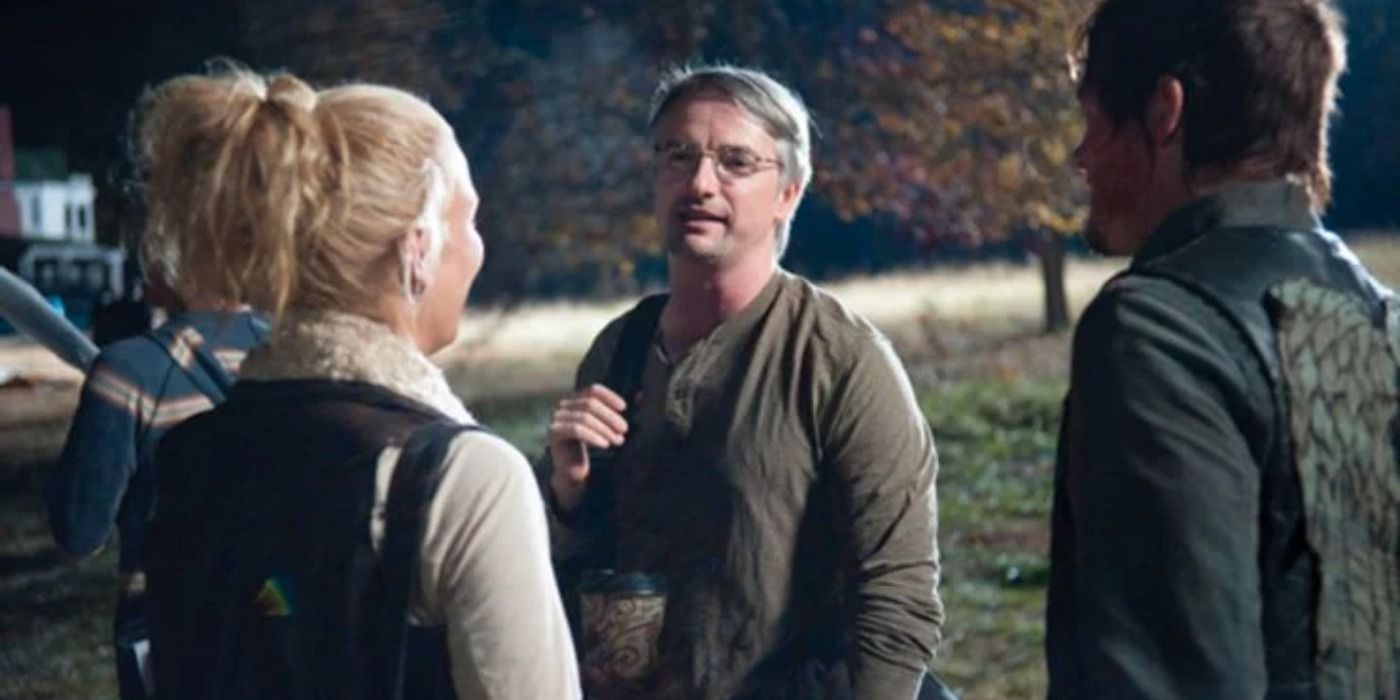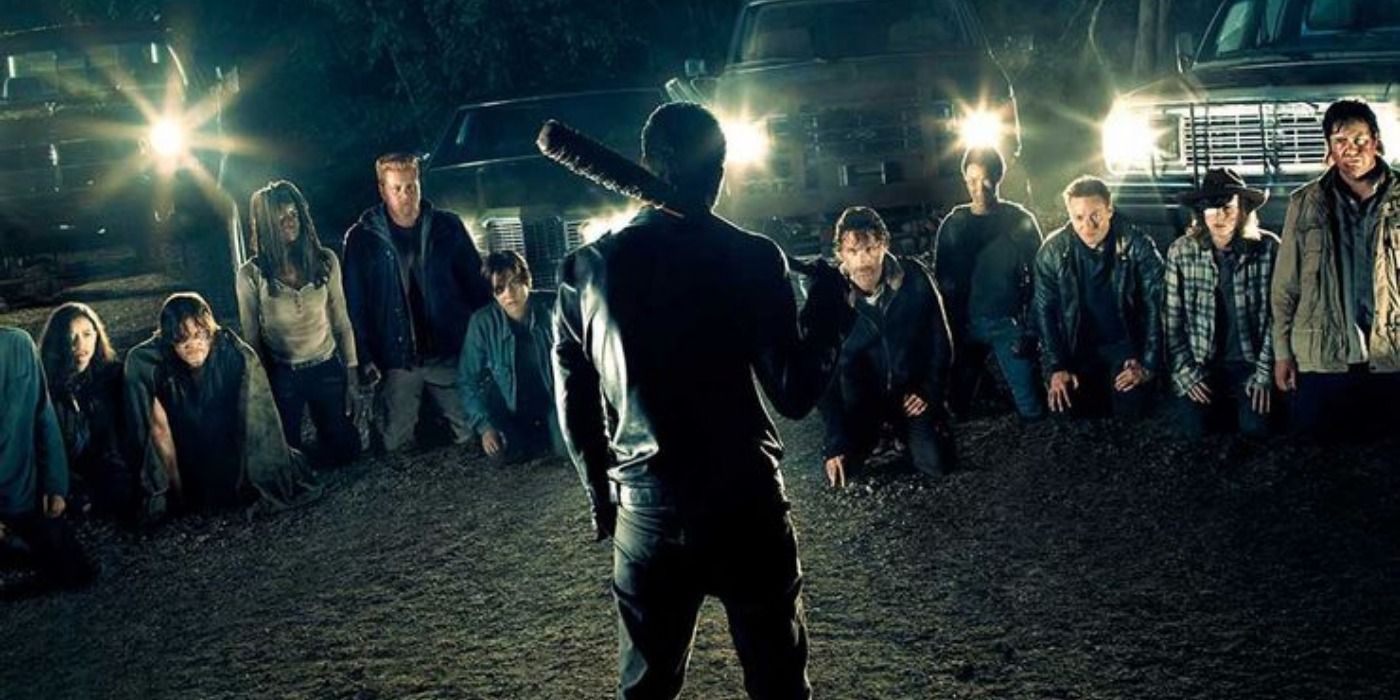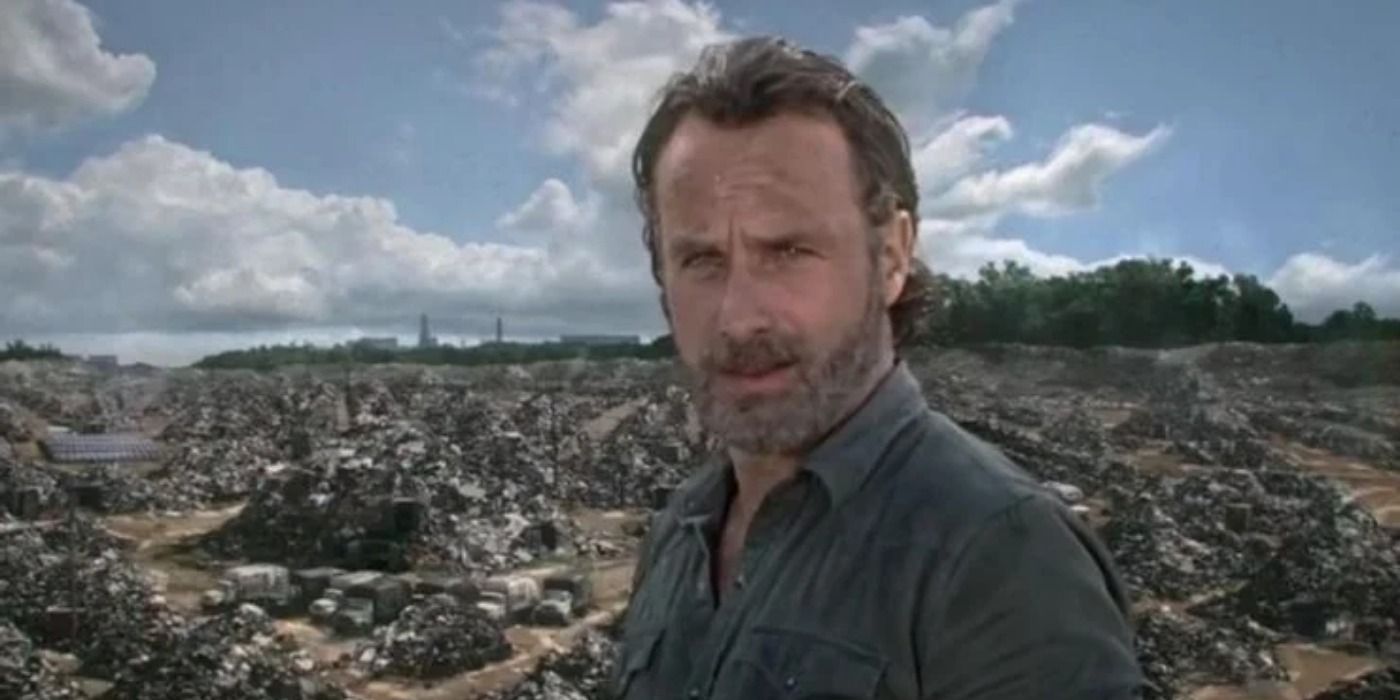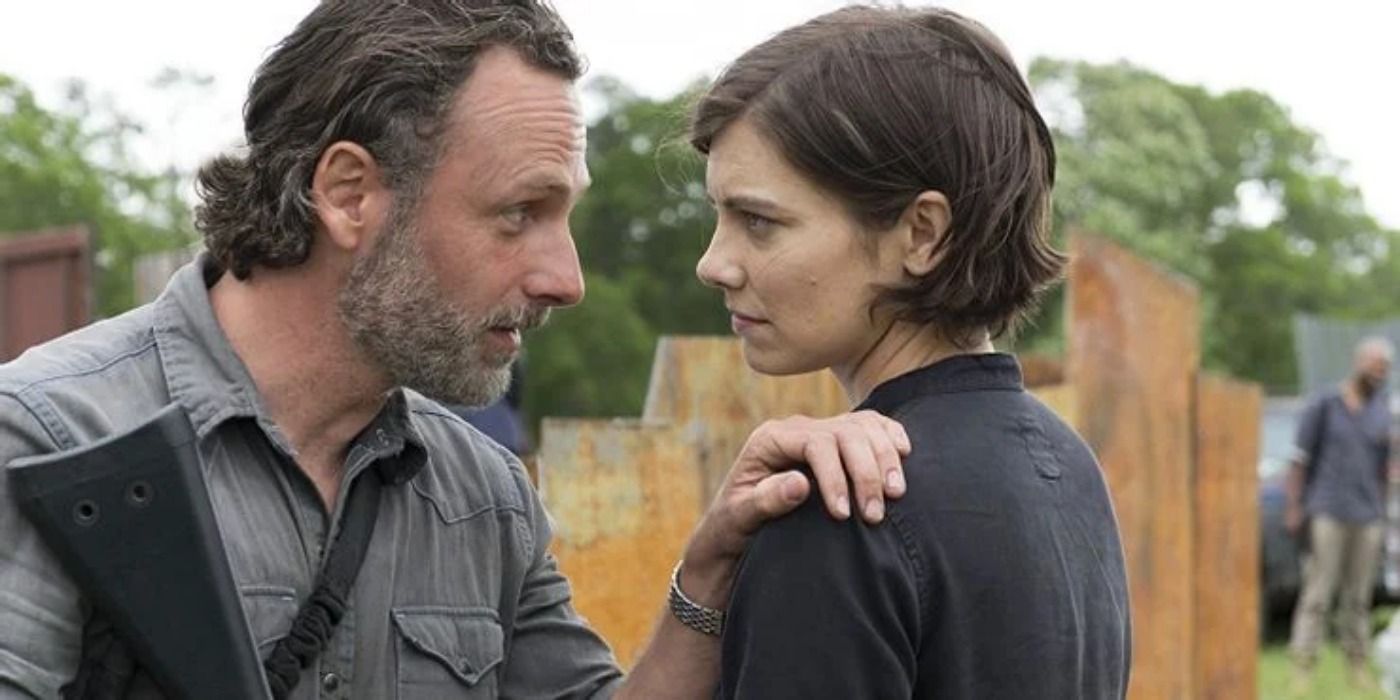The Walking Dead is one of the biggest series on television thanks to its devotion to character development, brilliant makeup effects, and intriguing storyline. Now, working through its final season, a lot of changes are coming for the survivors, some for the better and some for the worse. Whether you have read the comics or not, there's plenty going on in the show that hasn't been put to the page, and likely never will.
After 11 seasons, there's a lot going on behind the scenes many fans might not know about. What goes on when the camera isn't rolling and what went on to cause not one, but two showrunners to leave production? There are plenty of behind-the-scenes rumors and details going on that many haven't heard about. A lot goes into turning an extra into a walker, but sitting in the makeup chair is only part of becoming one of the many zombies on the show.
Updated on April 21st, 2022, by Shawn S. Lealos: The Walking Dead is currently in its 11th and final season. While this means the original series will go off into the sunset following the same Commonwealth storyline from the comics, it does not mark the end of the hit zombie apocalypse series. Characters like Daryl and Carol will get a spinoff and even Negan and Maggie will get their own show.
This proves that things will continue to veer off from the comic book's main conclusion. This should come as no surprise to fans of the AMC series since the show has faced many challenges thanks to behind-the-scenes moments that made The Walking Dead as fun to follow during its creation as it is to watch it play out on TV.
The Walking Dead Employs More Walkers Than You Might Expect
One of the best aspects of The Walking Dead is the show's reliance on real people and not CGI (for the most part) when it comes to the walkers. They could easily digitally create scary zombies to threaten the cast, but instead, chose to employ makeup and special effects artists to turn average people into undead monsters.
The showrunners hire as many as 200 extras each season. Extras on the show tend to come around every now and again, but thanks to the makeup and costume designers, viewers never notice repeat offenders. Most spend days on set and those numbers often reach as high as 60 at a time.
The Cops Have Gotten Involved
You have to be careful when filming a show about a bunch of dirty people running around with weapons — some people might get the wrong idea. During the first season, a SWAT team was called to the set when Michael Rooker was seen atop a building with a rifle.
We can't blame folks for calling the cops after seeing that, but it wasn't the only time the cast had a run-in with the law. Lauren Cohan was pulled over one evening on the way home from work while she was still covered in blood! Granted, it was fake blood, but that didn't make the police officer feel any better when he approached the vehicle.
There Are Four Types Of Zombies On The Show
When you have to spend a ton of time and money turning a regular person into a zombie, you want to make sure they aren't seen 200 yards from the camera. That doesn't mean the people out in the wide shots don't receive any makeup, but it does lead to a categorization of zombies on the set.
Walkers are classified depending on how much time they will be on screen and how close they are to the camera. Much further from the camera, they are wearing dirty clothes with cursory makeup. A bit closer, and they might grab a prosthetic, but it's the ones in full-frame who really get the Walking Dead treatment.
Aliens Could Have Appeared
The Walking Dead comic was already a huge franchise when creator Robert Kirkman went to pitch the series to AMC, but it didn't start out as well as he might have hoped. When he launched the book, there weren't a lot of people who thought it would succeed. How long could an endless tale of zombies really go on for, after all?
He joked in the early days that he would introduce aliens around issue #75 and make the whole story some crazy alien invasion backstory. While he was joking about that, he ended up putting some color pages in the back of the issue, which entertained most but infuriated some readers.
Time Passes Differently In The Walking Dead
The Walking Dead has been on for 12 years by the time the final season rolled around, but the show doesn't follow a real-time progression. Because of this, many fans wondered exactly how much time passed since the infection first struck humanity and wiped out most of civilization.
The series officially revealed how much time had passed since Rick Grimes went into a coma and woke up in the zombie apocalypse. The timeline was revealed in "Here's Negan" in Season 10. Based on his flashbacks, the 11 seasons consisted of between 12 and 13 years since the start of the zombie apocalypse.
Rick Was Supposed To Lose His Hand
Fans of the comics might have wondered why Rick didn't lose his hand in his first confrontation with the Governor. That's exactly what went down when the two first butted heads in the comics. It seemed a foregone conclusion Andrew Lincoln would have to wear a green glove for most of the series, but it never came to pass.
There's a simple and easy explanation for why the series decided not to go down that road: money. It would cost a lot to digitally remove his hand in each episode, not to mention the difficulty of shooting Lincoln with his hand out of frame most of the time.
Walkers And The Living Are Segregated On Set
Normally, when people work together, such as actors and crew members on film productions, they eat together. That's how it works in most cases, but not on the set of The Walking Dead. In order to create a distance between the living and the dead, they eat separately from one another.
It doesn't stop at simply eating apart. The craft services provided to the regular crew are usually pretty nice, but not so for the walkers. The extras are lucky if they get to eat spaghetti and a salad, which might make them want to bite the regulars a bit more when filming starts back up after lunch.
Daryl Was Created Specifically For Norman Reedus
Norman Reedus' Daryl Dixon is one of the fan favorites of the series. He even gets paid more than Andrew Lincoln, but he almost didn't make it onto the show. When Reedus first went in to audition, he did so for Merle Dixon's role, which went to Michael Rooker. Rooker had already been cast at that point, but the producers really liked Reedus.
To get him onto the show, they created an entirely new character for him. As any fan of the comics will tell you, the Dixon boys were both created for the series, but it says a lot about an actor's skill that a series would create another brand new character just to cast them.
Blinking Has To Be Digitally Removed From Walkers
On average, humans blink 15 to 20 times a minute. It's constant and involuntary, but one fact about blinking is that you don't do it when you cease to be alive. When The Walking Dead tells its walkers what to do on set, they don't bother telling them not to blink.
Because of this, they have to go into post-production editing and digitally remove the blinking from anyone working as a walker. It's a small change that costs a lot of money but you would notice if they didn't do it.
The Zombie Sounds Are Added In Post
There's a common sound all walkers make that is meant to frighten the audience as well as the people on screen. It's the constant moaning and groaning they make as they lurch towards their prey. To make the show, the walkers are told to keep their mouths shut and avoid their tendency to moan out "brains" as much as possible.
There are a lot of reasons for this, but the most obvious has to do with sound editing on a television series. Instead of putting microphones on each and every walker in the fields or holding up production for a sneeze, they simply add the sound effects in post-production.
Episodes cost $2 million each to make
Putting together an episode of The Walking Dead is anything but cheap. When the series launched in 2010, the average cost of an episode for season one reached $3.4 million dollars. That's a lot of money for a series on cable television, but the cost didn't remain as high for long. The huge budget led to issues between the showrunner and AMC, which ended up forcing the show to drop its cost.
These days, an episode runs AMC approximately $2.75 million, which isn't a small amount of money. It is far less than the cost for season one, which may be why the series has stuck it out as long as it has.
Cast Salaries Are A Big Part Of The Budget
It's easy to think the majority of the show's cost goes towards special effects and makeup, but the cast makes up the biggest portion of the budget. Andrew Lincoln, who plays Rick Grimes, made $92,000 and Norman Reedus made $80,000 to $124,000 (depending on the source) per episode in the early seasons.
Their costs rose, which consumed around 40% of the budget, and that was just two cast members. With Lincoln gone, there are still big names that ate into his original salary.
Walker Makeup Takes Two Hours
The makeup department over at The Walking Dead is huge. They constantly have dozens of walkers needed on set, which requires intense amounts of makeup to achieve. To get these people to look like they've been decomposing for more than a year requires an extensive amount of time in the makeup chair.
In most cases, that averages out to about two hours. Some people who are involved in the wide shots may get out of there earlier, but not everyone is so lucky. For the folks who really suffered from burns or were underwater for a while, they could end up in the chair for hours and hours.
Zombies Must Attend Zombie Academy
Being a zombie is more than throwing up their arms and groaning about brains. It takes more than that to be a good walker for The Walking Dead. In order to achieve a sort of unity across all of their walkers, the people coming in to play them must attend Zombie School.
The training involves teaching a person not to do the things we just mentioned. Keep their mouths shut, don't walk around like Frankenstein's monster, and nobody wants to hear about a desire to eat brains. Furthermore, the actors are told to act like they just stumbled out of the bar at 2:00 am and try to bite and lunge at the camera.
Why They Film In Georgia
Before 2008, nobody would have considered the state of Georgia to be a prime filming location. Things began changing when the state started offering hefty tax credits to anyone interested in filming there. The Walking Dead was an early adopter, having come to the state less than two years after it began courting Hollywood to film there.
The credit offers a 20% incentive on productions costing $500,000 or more, plus another 10% if their peach logo pops up at the end of the film's credits. By 2016, Georgia filmed more feature films than California. Marvel Studios made the leap to Georgia in 2018 and the state continues to reap the benefits.
Walkers Eat Pickled Ham
Nobody on the set of The Walking Dead is eating humans. When a walker has to chow down on a real-life person, they get to eat a rather interesting snack instead. The meat the walkers eat is pickled ham.
Not everyone likes eating it, but that hardly matters when you are trying to portray a zombie. As far as the viewer knows, the walkers are eating humans, which is why the meat is perfect for filming.
AMC's Big Moneymaker
Usually, when a production makes the move to Georgia for the tax break, they reinvest the savings back into their production. That makes sense when you consider the hundreds of thousands of dollars involved. Increasing a film's budget through tax incentives is one of the biggest reasons Georgia has been able to pull production into the state.
The Walking Dead handles things a bit differently. Instead of reinvesting, the entirety of that money reportedly goes right back into AMC's coffers. That allegation was made by the first showrunner, Frank Darabont, who insisted the money was meant for "alleviating shooting conditions" for the cast and crew.
The Walkers Continue to Decompose
The Walking Dead has gone on for a long time in the show's world, which helped guide the special effects artists in their work with the walkers. If you go back to season one and look at the walkers, you will notice they aren't as disgusting as they are now, in the final season.
These zombies have been traipsing around the country in the heat and rain for more than a decade, which means they have taken some damage. The producers continued to decompose the walkers since the first episode and will continue to do so as the series progresses.
The First Showrunner Sued AMC
Frank Darabont was fired from the show after the first season, which led to some serious allegations made by the filmmaker as well as quite a lot of animosity. In his complaint, he claimed AMC was pocketing the money from the tax incentive, but his issues didn't stop there.
The slashing of the budget by $650,000 per episode was a huge issue for Darabont, which led to him battling with the producers at every turn. Despite the incredible ratings from the first season, the stink raised by Darabont behind the scenes of The Walking Dead led to his being fired by Joel Stillerman, head of original programming at AMC.
Dale's Actor Asked To Be Bitten
When AMC fired Darabont, there weren't a lot of people who spoke out in his defense. However, there was one cast member who refused to keep quiet - Jeffrey Demunn, who played Dale Horvath in the first and second seasons.
His character was going to perish, but not for a long time, according to the comics. That didn't stop his protestations when he asked to be "bitten off the show." Demunn was a longtime friend and collaborator of Darabont's, having worked with him on numerous projects over the years. He showed loyalty and succumbed to the bite of a walker in protest.
It's Good To Live In Senoia
One of the biggest benefits of having a show film in and around your town is the boost to the local economy. Before The Walking Dead began filming in Senoia, Georgia, the town had five shops. Times have changed and the town has increased in size thanks to the show.
More shops are open and there is even a tourism industry related to filming locations for the series, but that's not the only benefit residents receive. Most of the town's families receive $400 a month from the production for the "inconvenience" of filming in the town. The money also guarantees their silence should they notice a plot twist or two.
The second showrunner was micromanaged
After Frank Darabont was fired from The Walking Dead, AMC replaced him with Glen Mazzara, who worked on the series under Darabont. He was surprised to receive the task and stayed on for two seasons before he left. When he left, he didn't talk about his reasons but eventually opened up about his experiences.
While he was given the title of "showrunner," he was not given much control. After about six episodes under his helm, Mazzara said that executives he never met stormed down on him like a walker horde. They reportedly began giving him notes and directing his actions to the point he couldn't take it anymore.
HBO Passed On The Show
The Walking Dead is one of the most violent television series ever made. It even tops shows like Game of Thrones, but despite that, it still landed on AMC. Interestingly, AMC was not the first choice when the show was pitched. In what seems an obvious choice, the pitch first went to HBO, but the company decreed it was too violent!
The network wanted the violence toned down. That wasn't going to happen: you can't have a zombie series without zombies eating people. The Walking Dead ended up at AMC without those notes and the series skyrocketed to success.
More VFX Than You Might Think
You might think a series all about practical zombie effects wouldn't employ much CGI, but that's nowhere near the case for The Walking Dead. It's true that the show features some of the best makeup on television, but that's not the only VFX trickery going on in front of our eyes.
We already mentioned some of the CGI done to mask blinking, but most of the CGI used on the show goes towards the sets. It's much cheaper to digitally matte a backdrop behind Rick than it is to find a junkyard precisely like the ones the showrunner wanted. It doesn't always look good, but usually, it works well enough to fool the audience.
The Show Doesn't Follow The Comics That Closely
There have been a number of deviations from the comics The Walking Dead made for a wide variety of reasons. They made some changes, but they generally follow the same storylines. That doesn't mean the series hasn't gone different ways in terms of casting. In a major surprise, Carl died, and in an even bigger surprise, more familiar faces left after that.
Andrew Lincoln's departure has been a long time coming, but then Lauren Cohen also left. While she since returned, Danai Gurira left the series, taking away several of the key players that made it to the end of the comic book series.

